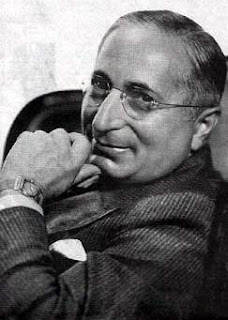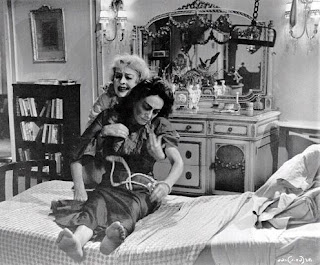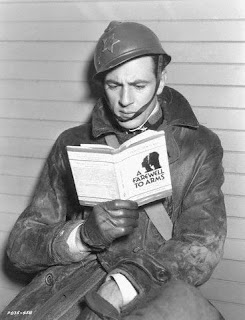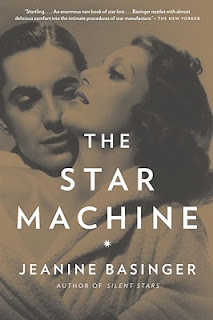Everyone loves a good cat fight! We even buy t-shirts in support of them: Team Aniston vs. Team Jolie, Team Simpson vs. Team Lachey... The new reality stars give us an especially hefty bag of trash to tote, with Lauren Conrad pitted against the forever mutating Heidi Montag, or Paris Hilton and Best Frenemy Nicole Richie sometimes at each other's throats and sometimes hugging it out. In the real world and in the reel world, we actually can't all just get along. Celebrity feuds run rampant in Hollywood, whether the tiffs are behind-the-scenes or out in the open, slight distates or out-and-out hate-fests. It's nothing new. Here are a few of the classic rivalries in La La Land history:
What's Eating Gilbert?


There is a marked difference between the quarrels between men and the battles between women. The girls seem to snarl and bare their fangs whereas the dudes usually just shake their heads and say, "I don't like that guy." So it was with Lon Chaney and John Gilbert, two of the biggest stars in the early MGM stable. The two men starred together in While Paris Sleeps and the first MGM production, He Who Gets Slapped, and didn't like each other at all. There were no punches thrown, no on-set arguments, just a mutual dislike that kept the men on opposite sides of the fence in their personal lives and professional careers. Lon was a serious man, who was a consummate professional on the set, constantly thinking of his character and his work. John was a play-boy who, though he took his work seriously, was more interested in the game of things and having a laugh than getting the job done. Lon thought John was immature and irresponsible; John thought Lon was uptight and no fun. For this reason, they had little to say to each other and kept their distance. Truthfully, the fun-loving Gilbert was probably intimidated by the legendary character actor. He once said of Lon, "I have nothing to say to that man. He always looks right through me."

This situation included no fireworks, just underbelly grumblings, which stands in stark contrast to the feud Gilbert had with the MGM "Man" himself, Louis B. Mayer (right). LB loved his mother, and he had an almost religious admiration for motherhood in general, despite the fact that he could be described as a misogynistic womanizer. In fact, he hired boy wonder Irving Thalberg as his right hand man partly because Irving had spoken reverently about his own mother in his "interview." If one was insulting about one's mother or motherhood in LB's presence, it pissed him off. Thus, Gilbert, who had a less than flattering opinion of his own mama, did not stand much of a chance in winning the studio head's good graces. He once told a story that ended with, "and that was the last time I saw my mother's ass!" Upon hearing this, Mayer became enraged, and hated the "disrespectful" actor ever after. It was rumored that LB was henceforward out to get Gilbert. When Gilbert was left at the altar for the fourth time by Greta Garbo, he was sobbing in the men's room when LB walked in and said, "What's the matter with you, Gilbert? Don't marry her. Just f*ck her and forget about her." With than, John threw a punch and knocked LB on his rump! LB swore revenge, and in the end many think he got it by maliciously destroying Gilbert's career. It was said he ordered the treble to be turned up on John's first sound film, His Glorious Night, which resulted in John's squeaky and pathetic exclamations of "I love you, I love you, I love you!" His career was over, and he dead, by the age of thirty-six.
Switchblade Sisters


A little healthy sibling rivalry is present in all families, but there was nothing healthy about the blatant animosity Olivia DeHavilland and Joan Fontaine had for each other. As children, their mother and father, and later step-father, pitted them against each other in a competition for love and attention. The mother sided with Olivia, the father figure with Joan, if at all. They learned at an early age to consider themselves enemies and not friends, and sadly never caught on to the trick or learned to rely on each other. Both grew up willful and brainwashed, and their rivalry only increased when both entered the entertainment business. Olivia had enjoyed success with A Midsummer Night's Dream when Joan came on the scene at RKO, which she probably did only because her new career path would surely annoy her sister. To estrange herself from her sister, Olivia and her mother insisted that Joan change her last name, which she did. The fight reached a climax at the Academy Awards of 1942 when both sisters were nominated: Olivia for Hold Back the Dawn and Joan for Suspicion. Joan would win, but Olivia would get even, winning in 1947 for To Each His Own and coldly turning her back on her sister's offered hand of congratulations.

Feigning Friendly
The sparring continued in their private lives, where they tried to beat each other to the altar, wealth, and motherhood, (usually Joan emerged victorious-- even if it meant she had to adopt to do it)! Throughout the years, the two would never make peace, the wedge between them firmly solidified when their instigating mother, Lilian, passed away, and to this day they do not speak to or of each other. Apparently, they are waging a final war of "who will live the longest," so until one of the legendary ladies takes her final bow, it looks like the rift will continue. (For more on the battle between Joan and Olivia visit my old blog here.)
The Trouble with Joan


It seems that the name Joan is cursed. Along with Ms. Fontaine, Joan Crawford is infamous for her battles and rivalries with other starlets. The most predominant war was with the incomparable Bette Davis, of course. Just how the rift started is up for debate, but many assume that it occured when Joan made the move to Warner Brothers, Bette's turf, to make Mildred Pierce. Bette was the reigning female star on the lot, so to have the equally notorious Ms. Crawford suddenly appear made the two a prime target for gossip, which created a false problem between the two before a real one even existed. They had no real relationship, and Bette tried to avoid her supposed nemesis in an attempt to dodge the possibility of fiction turning into fact. Joan did the opposite, supposedly wooing Bette like an ardent lover, sending her flowers and letters of flattery in the hope that the two could become friends. As Joan was a circumspect and puzzling person, it is unknown whether she did this to truly endear herself to a woman she considered a professional equal, or to overcompensate for the abundant rumors that they did indeed hate each other, or to play a cunning game of killing with kindness.

To make matters more interesting, there was a rumor that Joan was a bisexual and that she at one point made a pass at the flabbergasted Bette, who refused in disgust! Whether it's true or not, we'll never know. In retrospect, it seems that the two did have a bit of a professional feud going on for the Hollywood Queen's crown, but never actually had any real conflict. Though they may not have particularly like each other, their bitterness was more of a distaste than a founded hatred. In later years, when Joan's eldest adopted children would defame her memory in the scandalous book, Mommie Dearest, Bette even jumped to her defense, saying that no mother deserved such treatment from her children. But, the tension between the two did help make their collaboration, Whatever Happened to Baby Jane? (above), a classic. Whether the animosity between the two was real or imagined, on-screen it was electrifying.

Coop the Pacifist
If there was one actor who came close to being universally liked, it was Gary Cooper, the easy-going ladies' man from Montana. Coop had a bottomless pit of friends and admirers, despite his tight-lipped, "aw, shucks," demeanor, which he fully took advantage of to charm the ladies. His list of conquests was lengthy, including Clara Bow, Lupe Velez, and Patricia Neal. Tallulah Bankhead bragged that she came to Hollywood solely to sleep with Gary Cooper and that she got her wish. Another starlet he supposedly "got to know" was Carole Lombard, who in her typical Carole way, expressed annoyance that, despite his incredible sexual prowess, she couldn't get him to say a word to her in conversation. Perhaps that's why she took up with a more talkative chap, Clark Gable.

Coop and Gable were rumored to be friends (left with Van Heflin and Jimmy Stewart), albeit not very close ones, perhaps because there was definitely an unspoken rivalry going on between the two of them. Though they would go hunting together, the knowledge that Gary had bedded his wife was certainly irritating to Clark. In addition, the two men were in a constant public battle in the press as to who was the bigger star. As Gable was a naturally more insecure individual, he probably liked to have Gary around so he could keep an eye on his competition-- keep your friends close and your enemies closer-- and Coop, who needed the validation less, simply enjoyed the undercurrent of masculine competition. He didn't take the whole thing too seriously, as he didn't seem to take anything too seriously. Gable took everything seriously. Though both were likable men, Coop carried less of a chip on his shoulder in general, and had few problems with anyone. Another example: both Gable and Cooper worked with Charles Laughton, on Mutiny on the Bounty (below) and The Devil and the Deep respectively. Charles despised Gable and vice versa, but adored Coop and would extol his understated acting for years.

Another man's man with a bone to pick with Cooper was fellow cowboy John Wayne. Both men were acknowledged republicans, but Coop, as in all things, seemed to tow a middle line when it came to politics. Generally speaking, he kept mum. During the great witch hunt HUAC hearings, Cooper was called in as a "friendly witness," but though he answered the panel's questions, he failed to give away any information that would incriminate his friends. (Fellow celebs Robert Taylor and Elia Kazan would not be so diplomatic). Gary didn't hold grudges or pass judgments, and when he went to work on High Noon, written by the blacklisted Carl Foreman, he would fight for the project and Foreman's credit in it. John Wayne was a staunch anti-communist, and spoke out against the film for its "red" ties, as well as what he believed was its underlying liberal political allegory. He felt that the portrayal of a cowardly town and the final image of the Sheriff stepping on his badge was un-American. Coop stuck to his guns, literally, and churned out a classic that some hail as the greatest western every filmed. The clincher?? When Coop was absent at the 1952 Academy Awards, he asked Wayne to accept his award on his behalf. During his speech, Wayne even said that he wished he had been offered the part himself. Looks like Coop won that round!

Gary Cooper was just an all-around nice guy. Flawed, certainly... but unhampered by whatever issues he may have carried beneath his silence. For this reason, no real rivalry could spring up between him and anyone else, because he wouldn't allow such things to affect him. The others I have mentioned, were not so inclined. Insecurity is the basis for every human flaw, and this weakness reveals itself in jealousy, lashing out, and even downright cruelty. If you cast the eye of scorn upon someone else, perhaps it won't come back to you. Some people just never grow up and never fully leave the playground back in grade school where it belongs. Stars are no different. In the end, it is funny and entertaining to watch them be as childish and catty as the rest of us. All the backhanded compliments and behind-the-scenes cat fights allow us to ease up on our own personal quarrels. We're too busy laughing.






























